Showing Spotlights 41 - 48 of 199 in category All (newest first):
 Researchers propose a highly integrated system of an 'air charging' zinc-ion capacitor/battery. By scavenging energy from pervasive air, a zinc-ion capacitor/battery can be conveniently and easily charged without applying an additional power source. The system possesses a simply structure that consists of a flexible bifunctional U-shaped electrode (with the dual function of energy harvesting and storage), a zinc-metal electrode in middle, and two different polyelectrolytes (PAM and PANa) sandwiched between the metal zinc and the electrode.
Researchers propose a highly integrated system of an 'air charging' zinc-ion capacitor/battery. By scavenging energy from pervasive air, a zinc-ion capacitor/battery can be conveniently and easily charged without applying an additional power source. The system possesses a simply structure that consists of a flexible bifunctional U-shaped electrode (with the dual function of energy harvesting and storage), a zinc-metal electrode in middle, and two different polyelectrolytes (PAM and PANa) sandwiched between the metal zinc and the electrode.
Apr 5th, 2019
 Researchers report a simple, innovative and inexpensive design of a vitamin-based hybrid biocompatible nanogenerator with energy harvesting ability from various energy sources in a single device. This is the first time that inexpensive and biocompatible vitamin B2 has been used as a novel and effective beta-phase stabilizer to enhance the piezoelectric performance of PVDF. The attractiveness of using vitamin B2 is that it is biodegradable and biocompatible, thermodynamically stable, low-cost, has delocalized pi-electrons, contains multiple numbers of hydroxyl groups, carbonyl groups and amino groups in its backbone.
Researchers report a simple, innovative and inexpensive design of a vitamin-based hybrid biocompatible nanogenerator with energy harvesting ability from various energy sources in a single device. This is the first time that inexpensive and biocompatible vitamin B2 has been used as a novel and effective beta-phase stabilizer to enhance the piezoelectric performance of PVDF. The attractiveness of using vitamin B2 is that it is biodegradable and biocompatible, thermodynamically stable, low-cost, has delocalized pi-electrons, contains multiple numbers of hydroxyl groups, carbonyl groups and amino groups in its backbone.
Feb 28th, 2019
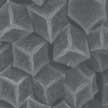 Directly carbonizing from organic precursors is the most frequently used method to prepare nanoporous carbons, widely used as electrode materials, due to its flexibility and simplicity. These materials present certain drawbacks, though, such as low surface areas, disordered structures, and non-uniform sizes, which will greatly limit their applications. However, researchers found that carbon materials derived from metal-organic frameworks (MOFs) could overcome these limitations. A review summarizes the applications of MOF-derived carbon materials.
Directly carbonizing from organic precursors is the most frequently used method to prepare nanoporous carbons, widely used as electrode materials, due to its flexibility and simplicity. These materials present certain drawbacks, though, such as low surface areas, disordered structures, and non-uniform sizes, which will greatly limit their applications. However, researchers found that carbon materials derived from metal-organic frameworks (MOFs) could overcome these limitations. A review summarizes the applications of MOF-derived carbon materials.
Feb 20th, 2019
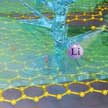 The formation of dendrites on the metal electrodes of lithium metal batteries causes safety and performance concerns. To avoid dendrites, researchers are experimenting with new battery electrolyte chemistries, new separator technologies, and new physical hosts for the lithium metal. Researchers now have discovered a key design rule for Li metal batteries: If you want to suppress dendrites, you have to use a defect-free host. More generally, carbon defects catalyze dendrite growth in metal anodes.
The formation of dendrites on the metal electrodes of lithium metal batteries causes safety and performance concerns. To avoid dendrites, researchers are experimenting with new battery electrolyte chemistries, new separator technologies, and new physical hosts for the lithium metal. Researchers now have discovered a key design rule for Li metal batteries: If you want to suppress dendrites, you have to use a defect-free host. More generally, carbon defects catalyze dendrite growth in metal anodes.
Feb 13th, 2019
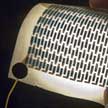 Over the past ten years, paper has emerged as a focus area for researchers developing innovative techniques for printed basic electronics components. The goal of this research is to replace plastic substrates with low-cost, versatile and sustainable materials. The main advantages of investing in paper for electronics and energy storage devices are the low cost of the technology; the potentiality to recover device components and recycle the substrate as well as the active materials; and the production of environmentally harmless and biocompatible devices.
Over the past ten years, paper has emerged as a focus area for researchers developing innovative techniques for printed basic electronics components. The goal of this research is to replace plastic substrates with low-cost, versatile and sustainable materials. The main advantages of investing in paper for electronics and energy storage devices are the low cost of the technology; the potentiality to recover device components and recycle the substrate as well as the active materials; and the production of environmentally harmless and biocompatible devices.
Feb 7th, 2019
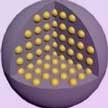 Potassium-ion batteries (PIBs) have been considered as promising alternatives to lithium-ion batteries due to the rich natural abundance of potassium and similar redox potential with Li+/Li. Recently, researchers have designed and fabricated a novel antimony carbon composite PIB anode via a facile and scalable electrospray-assisted strategy and found that this anode delivered super high specific capacities as well as cycling stability in a highly concentrated electrolyte. These encouraging results will significantly promote the deep understanding of the fundamental electrochemistry in Potassium-ion batteries as well as rational development of efficient electrolyte systems for next generation high-performance Potassium-ion batteries.
Potassium-ion batteries (PIBs) have been considered as promising alternatives to lithium-ion batteries due to the rich natural abundance of potassium and similar redox potential with Li+/Li. Recently, researchers have designed and fabricated a novel antimony carbon composite PIB anode via a facile and scalable electrospray-assisted strategy and found that this anode delivered super high specific capacities as well as cycling stability in a highly concentrated electrolyte. These encouraging results will significantly promote the deep understanding of the fundamental electrochemistry in Potassium-ion batteries as well as rational development of efficient electrolyte systems for next generation high-performance Potassium-ion batteries.
Jan 21st, 2019
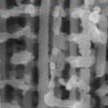 By re-designing interconnected nanowire networks, researchers fabricated novel nanostructured current collectors, which are the first to combine very high surface area, high porosity, substantially large pores and mechanical flexibility. Thanks to its ordered microstructure, the material can uniquely combine high porosity of cellular metal foams with high surface area of state-of-the-art nanoporous dealloyed metals, which allowed it to surpass the electrochemical performance of up to 300-thicker commercial electrodes.
By re-designing interconnected nanowire networks, researchers fabricated novel nanostructured current collectors, which are the first to combine very high surface area, high porosity, substantially large pores and mechanical flexibility. Thanks to its ordered microstructure, the material can uniquely combine high porosity of cellular metal foams with high surface area of state-of-the-art nanoporous dealloyed metals, which allowed it to surpass the electrochemical performance of up to 300-thicker commercial electrodes.
Jan 18th, 2019
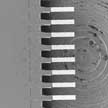 One of the persistent challenges associated with electrode degradation and battery failure is the stress induced by ion intercalation, companied by large volume fluctuation of electrode materials. Although researchers have developed numerous in situ microscopy and spectrometry technologies that provided valuable insights into the impacts of the stress buildup and release, the strength of the localized stress at the micro- and nanoscale remains poorly understood. In new work, researchers have developed an in situ solution to quantitatively measure the localized stress on electrodes.
One of the persistent challenges associated with electrode degradation and battery failure is the stress induced by ion intercalation, companied by large volume fluctuation of electrode materials. Although researchers have developed numerous in situ microscopy and spectrometry technologies that provided valuable insights into the impacts of the stress buildup and release, the strength of the localized stress at the micro- and nanoscale remains poorly understood. In new work, researchers have developed an in situ solution to quantitatively measure the localized stress on electrodes.
Jan 10th, 2019
 Researchers propose a highly integrated system of an 'air charging' zinc-ion capacitor/battery. By scavenging energy from pervasive air, a zinc-ion capacitor/battery can be conveniently and easily charged without applying an additional power source. The system possesses a simply structure that consists of a flexible bifunctional U-shaped electrode (with the dual function of energy harvesting and storage), a zinc-metal electrode in middle, and two different polyelectrolytes (PAM and PANa) sandwiched between the metal zinc and the electrode.
Researchers propose a highly integrated system of an 'air charging' zinc-ion capacitor/battery. By scavenging energy from pervasive air, a zinc-ion capacitor/battery can be conveniently and easily charged without applying an additional power source. The system possesses a simply structure that consists of a flexible bifunctional U-shaped electrode (with the dual function of energy harvesting and storage), a zinc-metal electrode in middle, and two different polyelectrolytes (PAM and PANa) sandwiched between the metal zinc and the electrode.
 Subscribe to our Nanotechnology Spotlight feed
Subscribe to our Nanotechnology Spotlight feed





